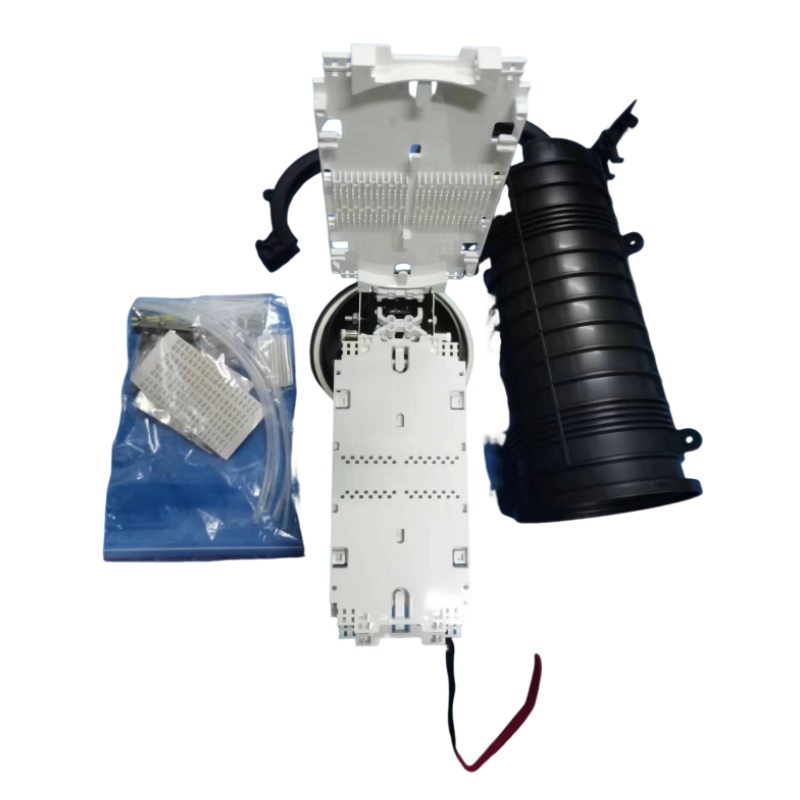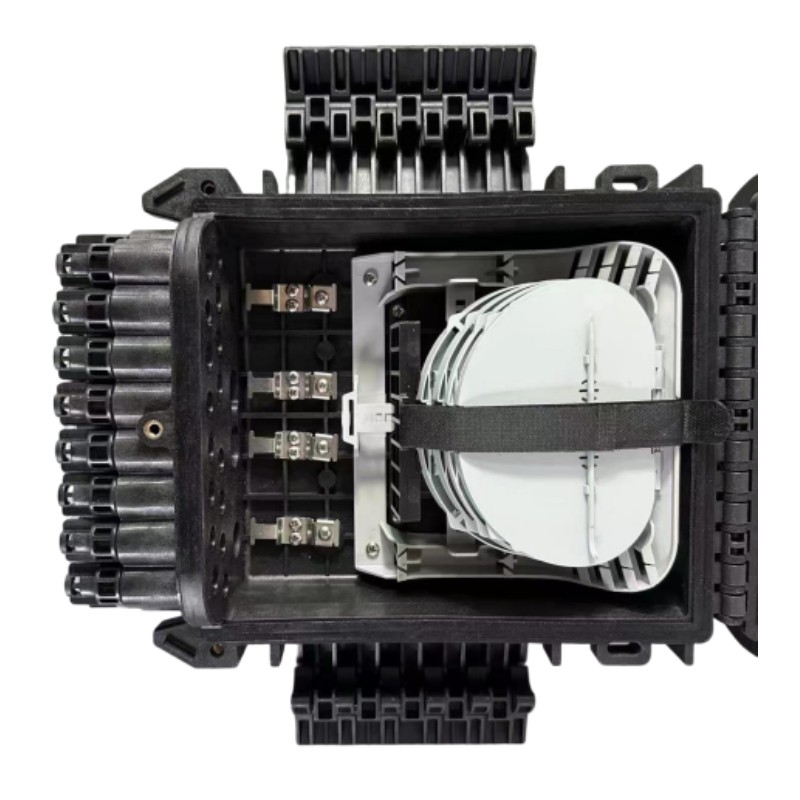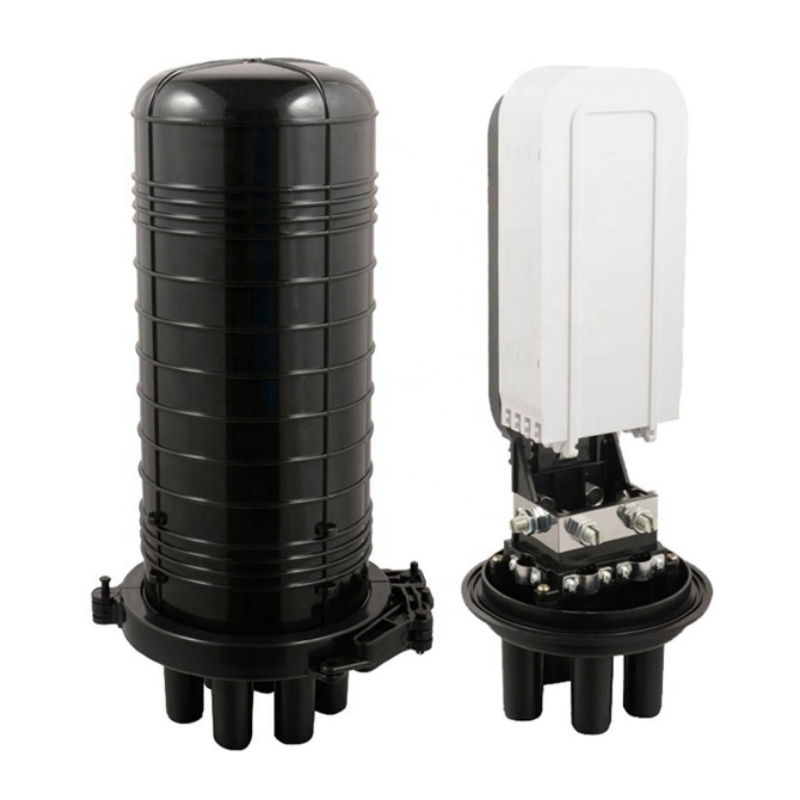Fiber Optic Splice Closure Manufacturer
Designed to provide space and protection for fiber optic cable splicing and joints,
this essential component plays a crucial role in the optical fiber fusion splice section system.
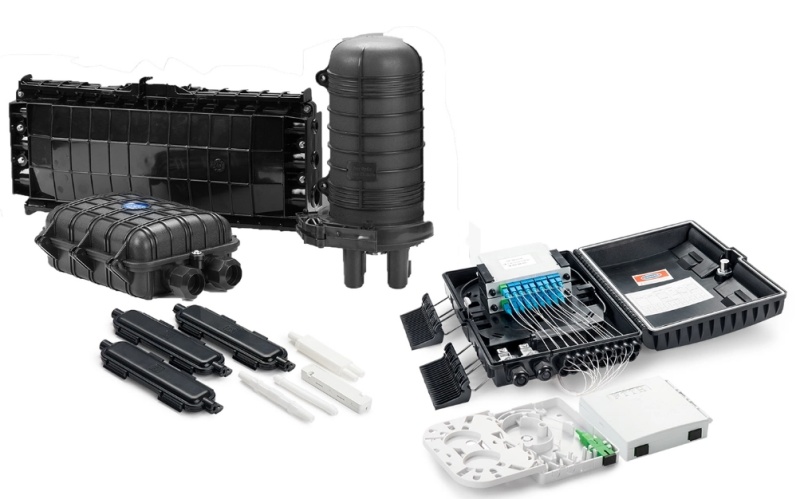
Fiber optic splice closure provides space and protection for fiber optic cable splicing and joints.
With its sealing, protection, and installation capabilities, the fiber optic closure ensures reliable connectivity while safeguarding the integrity of fiber optic connections.
Main Features of Our Splice Closures
- High-quality materials: Constructed from high-quality PC, ABS or PPR materials, the splice closure withstands harsh conditions. Including vibration, impact, tensile cable distortion and extreme temperature changes.
- Solid and durable structure: The closure features a solid structure with a perfect outline, providing resistance against thunder, erosion and external forces.
- Mechanical sealing design: Strong and well-designed mechanical sealing structure, allowing for easy opening and reusability after sealing.
- Water and dust resistance: Well-sealed against water and dust, the closure ensures reliable performance in challenging environments. We can reach IP68 Rank if you need. The unique grounding device enhances the sealing performance and facilitates convenient installation.
- Wide application range: The splice closure is highly versatile and suitable for various applications. It exhibits excellent sealing performance, easy installation and a high-strength engineering plastic housing with anti-aging, corrosion resistance, high temperature resistance, and mechanical strength.
2. Normal Types of Splice Closure
Dome Splice Closure
Dome splice closures feature a dome-shaped housing that provides ample space for fiber optic cable splicing and protection.
They are typically used for aerial, underground or direct burial applications. Dome closures offer excellent sealing performance and easy access for installation and maintenance.
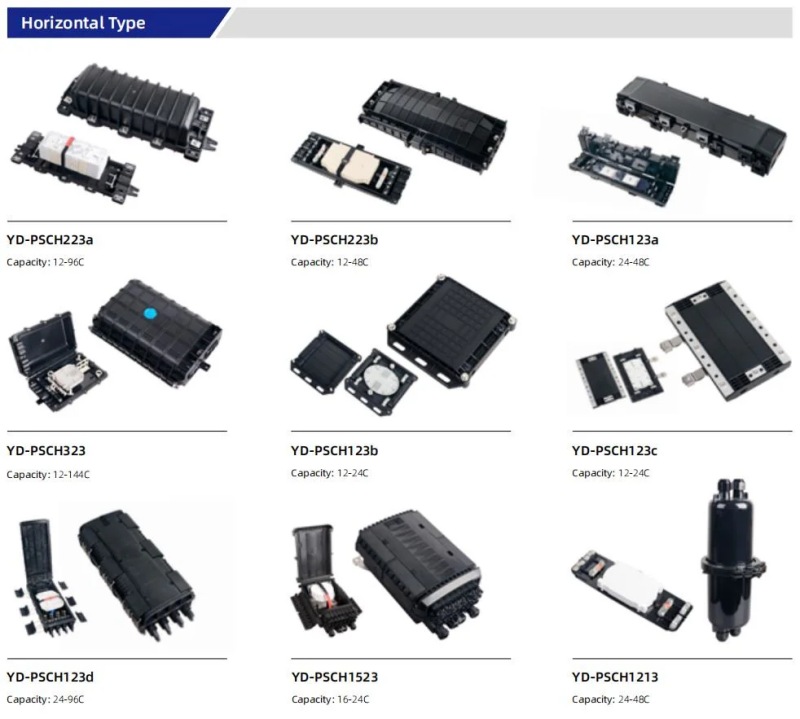
Horizontal Splice Closure
Horizontal splice closures, also known as tray-type closures, have a flat horizontal configuration with multiple trays inside.
These closures provide a convenient solution for organizing and managing fiber optic splices. They are often used in rack-mount or wall-mount installations.
Vertical Splice Closure
Vertical splice closures, also called tower closures, have a vertical design with multiple trays stacked on top of each other.
They are suitable for installations where space is limited horizontally but have sufficient vertical space available. Vertical closures are commonly used in pole-mounted or aerial installations.
3. Fiber Optic Splice Closure Applications
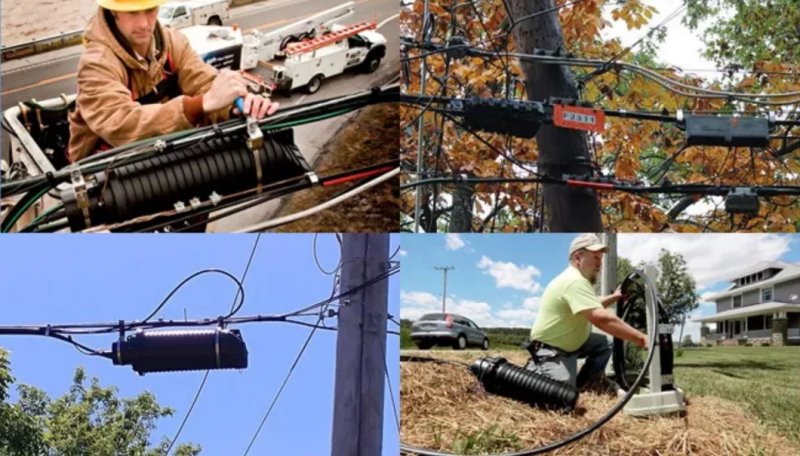
FTTH Project & FTTX Deployments:
Splice closures play a vital role in FTTH (Fiber to the Home) projects and FTTX (Fiber to the X) deployments.
These closures provide a secure and protective environment for splicing fiber optic cables.
With the increasing demand for high-bandwidth connections, splice closures are crucial in establishing the last-mile connectivity required for efficient data transmission.
Optical LAN & WAN & CATV:
In optical LANs, splice closures are used to connect and manage fiber optic cables within buildings.
In WAN deployments, splice closures are employed to interconnect fiber optic cables across long distances, ensuring seamless connectivity between different locations and facilitating efficient data exchange.
Similarly, in CATV systems, splice closures splice and protect fiber optic cables which distributing cable TV signals, ensuring high-quality and uninterrupted television services.
Telecommunication Network:
Splice closures have been a fundamental component in traditional telecommunication networks and continue to be crucial in modern networks. They provide protection and organization for fiber optic cables, enabling efficient splicing, termination, and management of network connections.
Local Area Network:
Splice closures particularly use in those that rely on fiber optic infrastructure.
LAN splice closures provide a central location for splicing and protecting fiber cables within a building or campus environment.
They facilitate the interconnection of devices, such as computers, servers, switches and routers.

